La Nina has reached its peak just as the Winter 2022/2023 begins. After that, it will begin its slow breakdown process while still affecting the weather patterns over the Winter season. But we are already seeing signs that later in 2023, an El Nino could emerge after several years. It can completely change the weather patterns for the weather seasons next year.
Global climate is very sensitive to large-scale changes in the oceans. That is why we monitor these anomalies, as they can significantly influence seasonal weather patterns. Especially in Winter, when the pressure systems are strongest.
First, we will quickly analyze how these ocean anomalies actually change global weather. Then we will see how they will affect the current Winter 2022/2023 and why an emerging El Nino event is so significant.
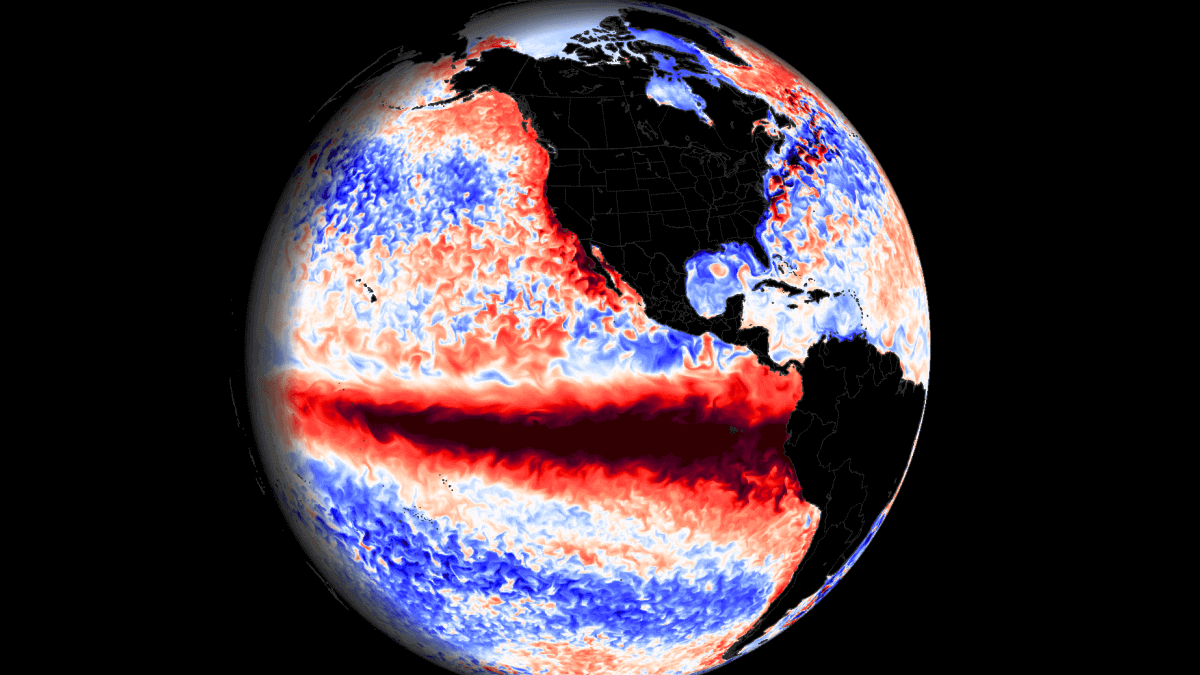
OCEAN-ATMOSPHERE GLOBAL WEATHER
El Nino and La Nina are just opposite faces of the ENSO, which stands for “El Niño Southern Oscillation.” This region in the equatorial Pacific Ocean periodically shifts between warm and cold phases. Typically there is a phase change around every 1-3 years.
ENSO significantly influences tropical rainfall, pressure patterns, and the complex energy exchange between the ocean and the atmosphere. We can observe large-scale pressure changes in the tropics with each developing or decaying phase.
The image below shows the ENSO regions across the tropical Pacific. Regions 3 and 4 cover the east and west tropical Pacific. The main area is a combination of regions 3 and 4, seen in the image as the Nino 3.4 region.
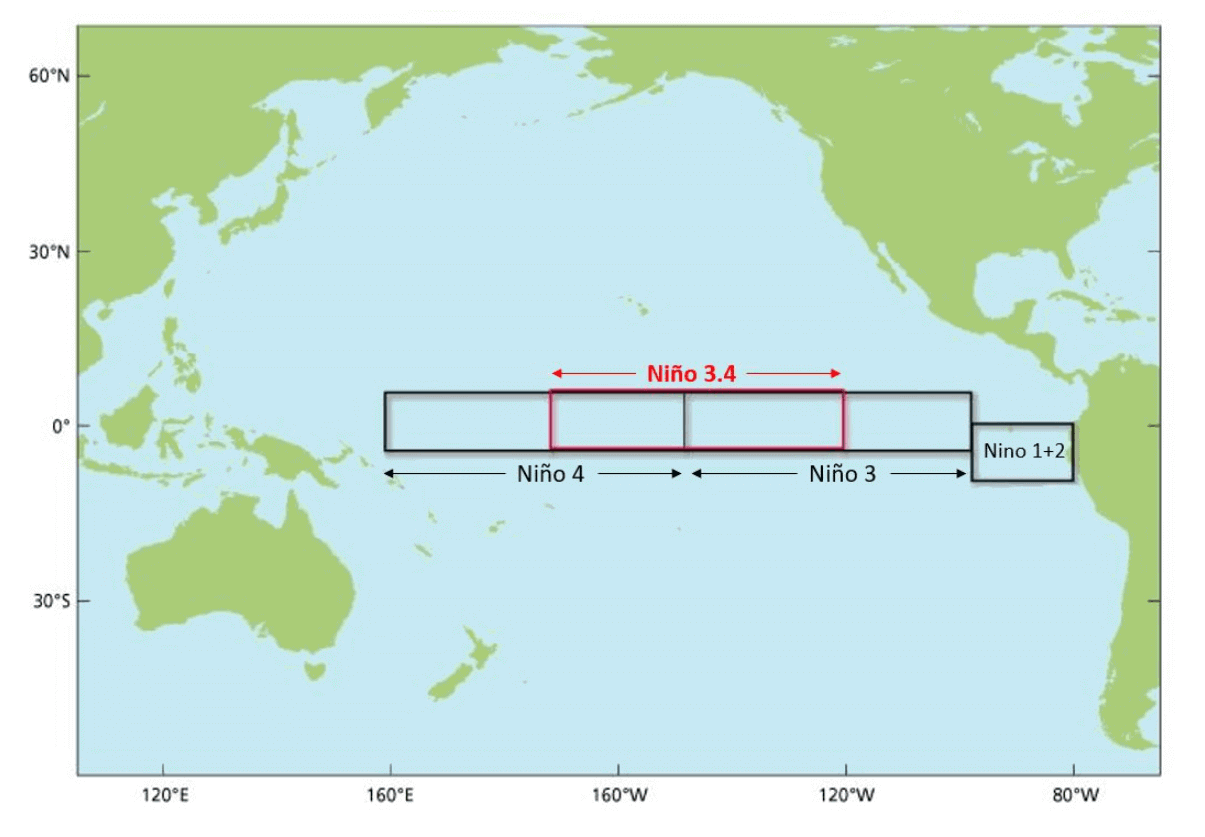
Each ENSO phase influences the pressure and weather in the tropics in a different way. This affects the overall global circulation over time, changing the weather patterns across the world.
Each phase (cold/warm) usually develops between late summer and early Fall and typically lasts until Spring. But some events can last up to two or three years, as in the current cold phase.
The cold ENSO phase is La Nina, and the warm phase is El Nino. Besides the temperatures, one of the main differences between the phases is the pressure patterns they develop, seen below as high (H) and low (L) pressure zones.
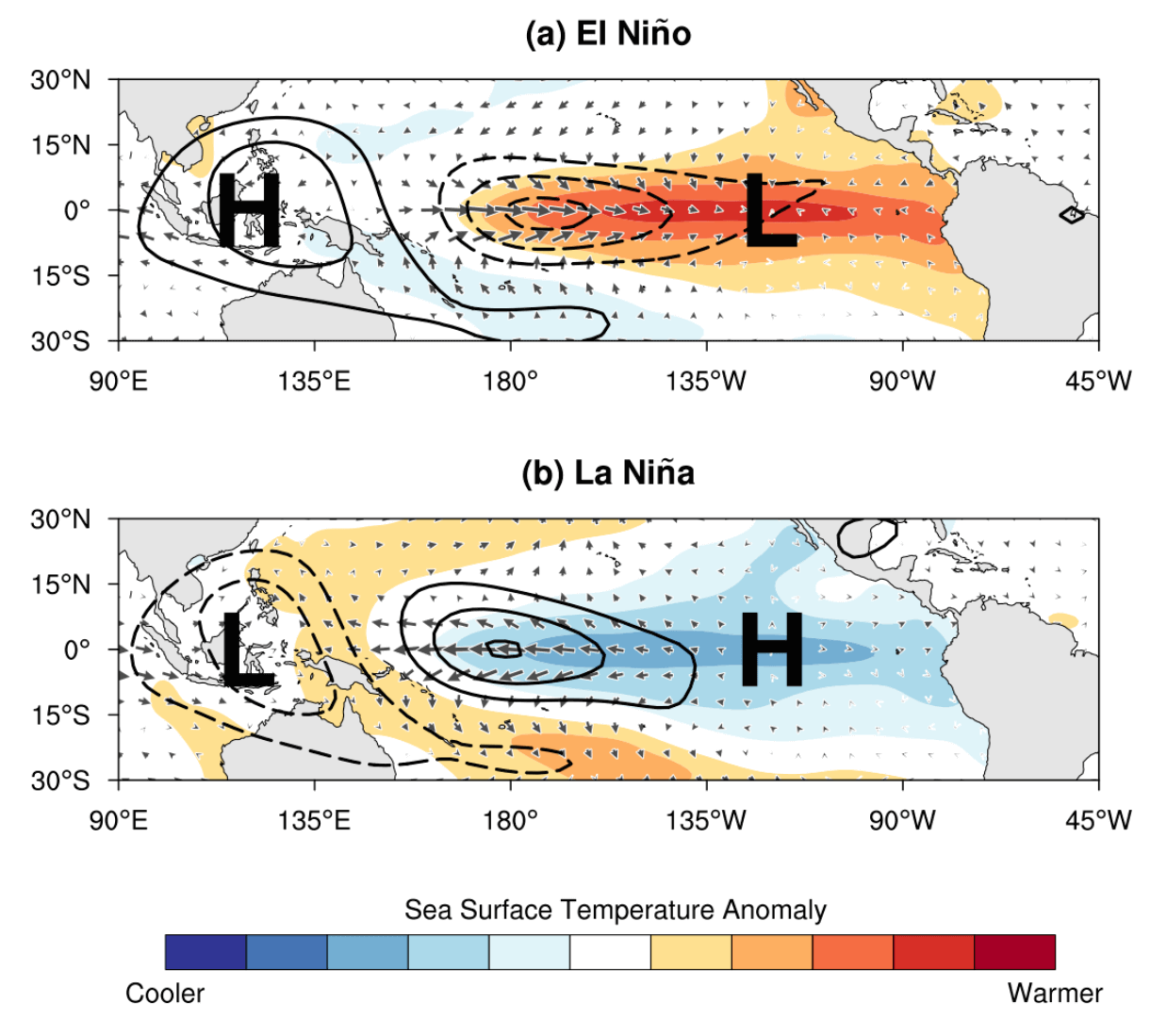
During an El Nino, the pressure over the tropical Pacific is lower, with more rainfall and storms in this region.
But during a La Nina, the pressure over the equatorial Pacific rises and creates stable conditions and fewer storms. These pressure changes translate into global circulation over time, affecting seasonal weather over both Hemispheres.
ATMOSPHERIC FEEDBACK
The following image below from NOAA Climate shows the typical circulation during a cold ENSO phase, which is currently still active.
Descending air in the eastern Pacific causes high pressure and stable weather. At the same time, the air is rising in the western Pacific, causing frequent thunderstorms, low pressure, and more rainfall.
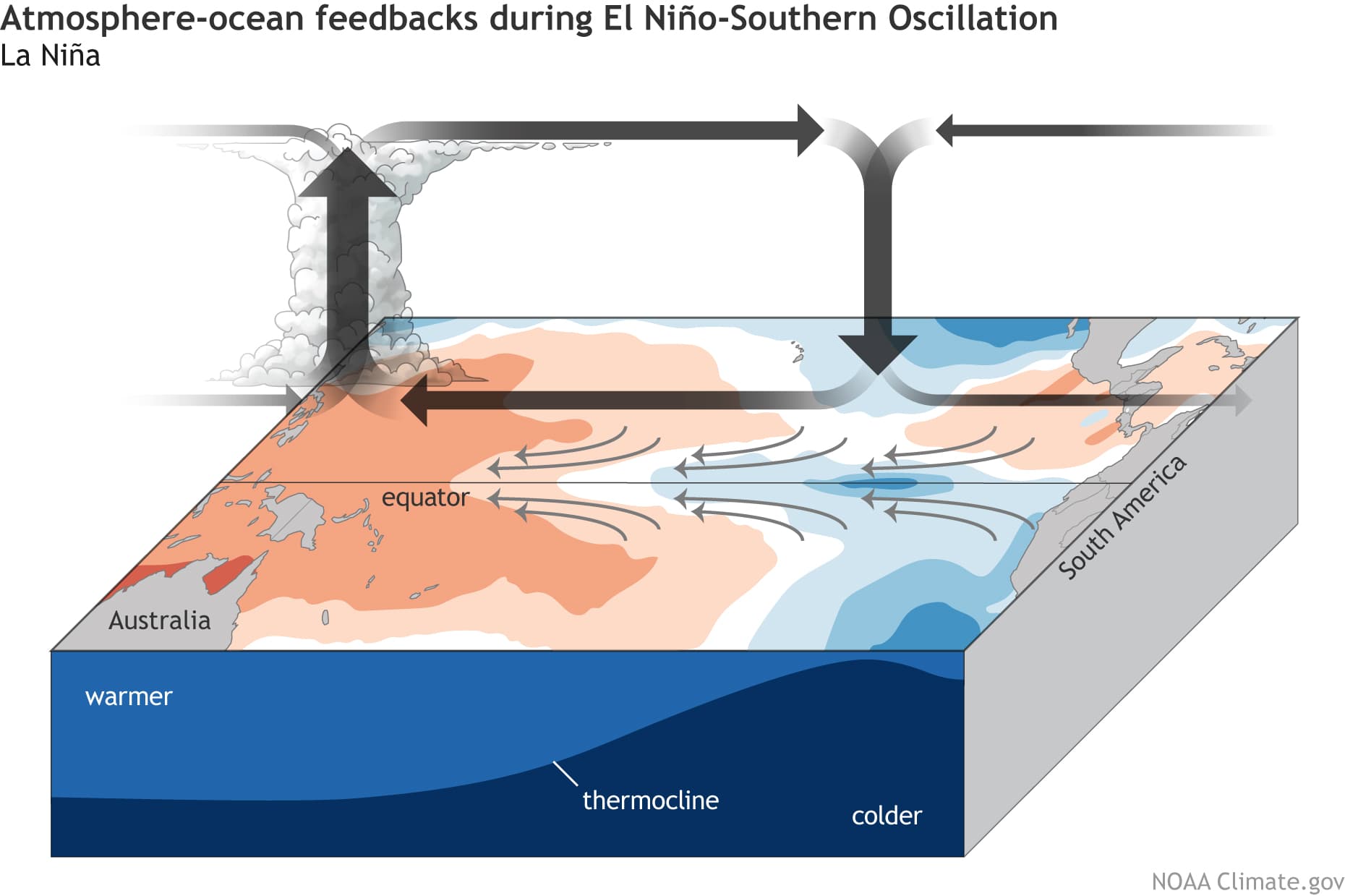
This way, ENSO has a strong impact on the tropical rainfall and pressure patterns, affecting the ocean-atmosphere feedback system. Through this ocean-atmosphere system, the ENSO influences the weather globally.
We can observe a global shift in pressure patterns during the emergence of an ENSO phase. But it is usually more influential during the peak of its phase.
But how does ENSO even shift between cold and warm phases? The simplest answer is that it results from a complex relationship between pressure, winds, and ocean currents.
Global trade winds usually start or stop a certain ENSO phase by overturning the ocean surface layers and altering the ocean currents. Trade winds are steady and persistent winds, blowing towards (and along) the Equator in both Hemispheres.
This process is much better seen in the video animation below, showing ocean temperature anomalies from Summer to Fall.
ENSO cooling restarted in August as the trade winds intensified. As a result, you can see cold waves developing across the equatorial Pacific as the winds push surface waters to the west.
LA NINA FINAL STAND FOR WINTER
The latest global ocean analysis below reveals healthy cold ocean anomalies in the tropical Pacific. The active La Nina spans almost across the entire equatorial Pacific. Image by NOAA CRW.

Below, you can see the anomaly data from the past years across the ENSO region. You can see the first La Nina event in 2020. The second La Nina occurred in late 2021, lasting through the Winter. A third-year event is currently active and will last over the Winter 2022/2023.

Below, you can see the progress of some historical multi-year La Nina episodes. Only two events previously had a 3rd-year event, like this season. Three events went neutral in the third year, and three phases already shifted into an El Nino in the third season.

No cold event has gone into the 4th year in the known records. So it is expected that we are now seeing the last La Nina phase for some time.
But we can see on the graph below, for the main ENSO 3.4 region, that it has likely reached its bottom last month. Currently, we are observing a weakening of the cold anomalies. While it can still cool down for a short time, stronger lows are not expected. In total, this signals that the peak of this La Nina has been reached.

Looking more closely at the latest analysis of the ENSO regions below, the strongest cold anomalies are more defined in the eastern regions. Overall, La Nina still looks to be in a healthy state, with cold anomalies spanning far across most of the tropical Pacific.

But looking at the western region below, you can see ongoing slow warming since late October. This shows that cold anomalies are getting thinner in the western ENSO region, signaling that the breakdown process has already begun and will continue over Winter.

Below we have the latest 7-day ocean temperature anomaly change. You can clearly see the ongoing warming in the eastern and central ENSO regions. Some areas have seen temperature increases of over 2 degrees celsius in one week.
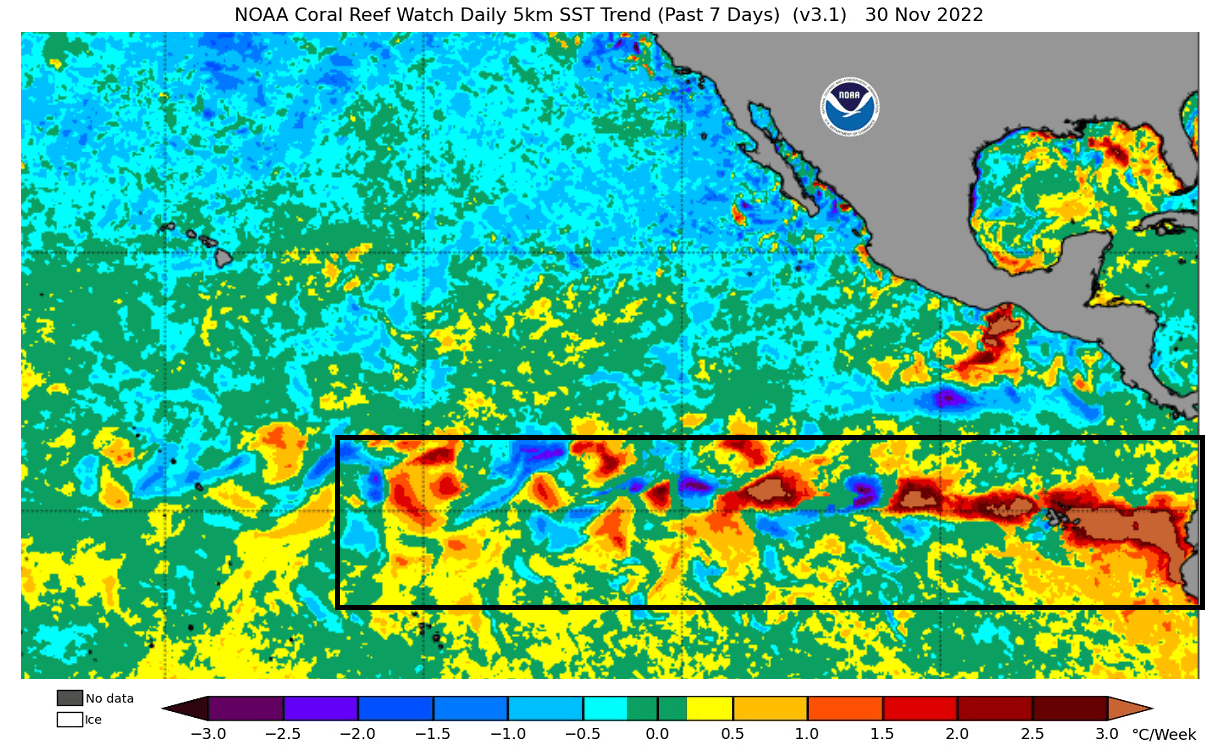
But this is just on the surface, with much more going on below.
BELOW THE OCEAN SURFACE
The activity below the ocean surface shows two strong anomalies on each side of the equatorial Pacific. You can see the cold pool of the currently active La Nina, but a warm anomaly is expanding in from the west. This will play a significant role in 2023.
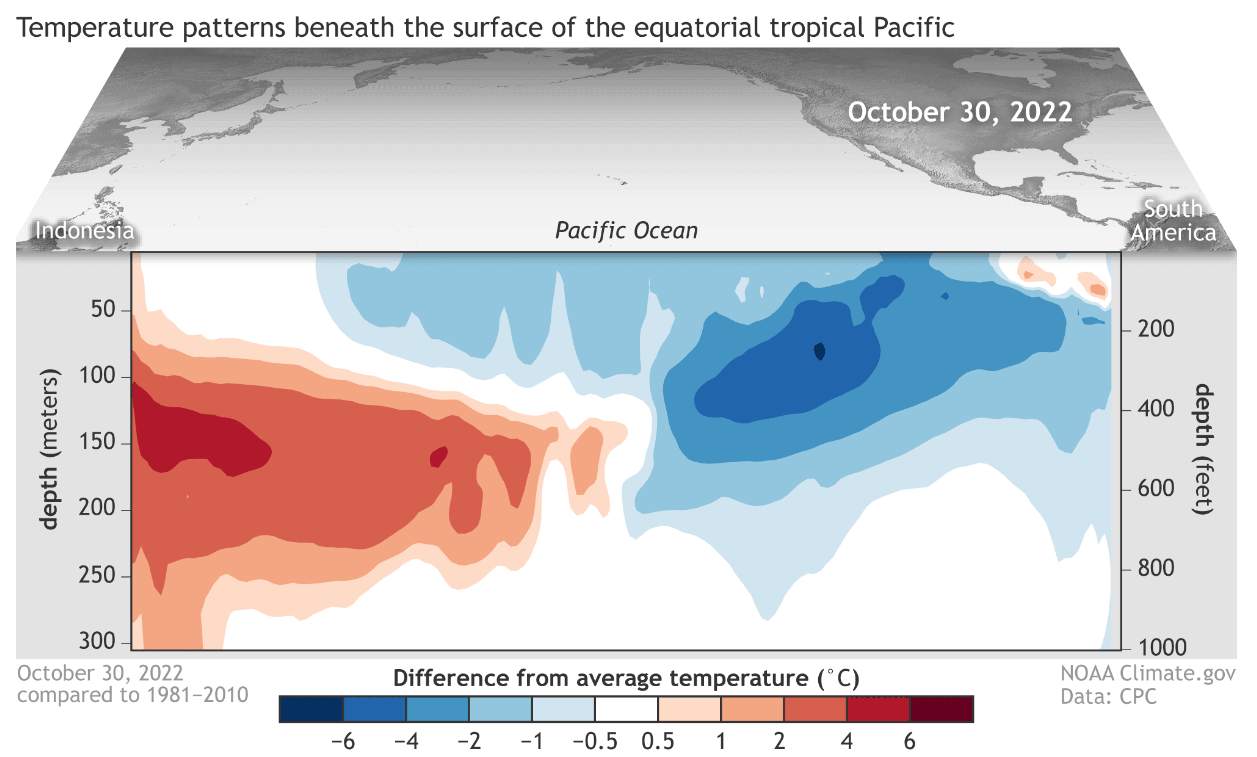
Looking ahead at the June 2023 ocean forecast from CFS, we can see the warm pool taking over the subsurface waters. This signals that the El Nino conditions may appear on the surface later in the year, with completely different weather patterns.

Speaking of the El Nino, what do the surface forecasts show over the Winter and into 2023?
ENSO WINTER FORECAST
The ocean temperature forecast from the joint North American models (NMME) shows the active La Nina phase over most of the Winter season. That is in agreement with other global forecasting solutions.
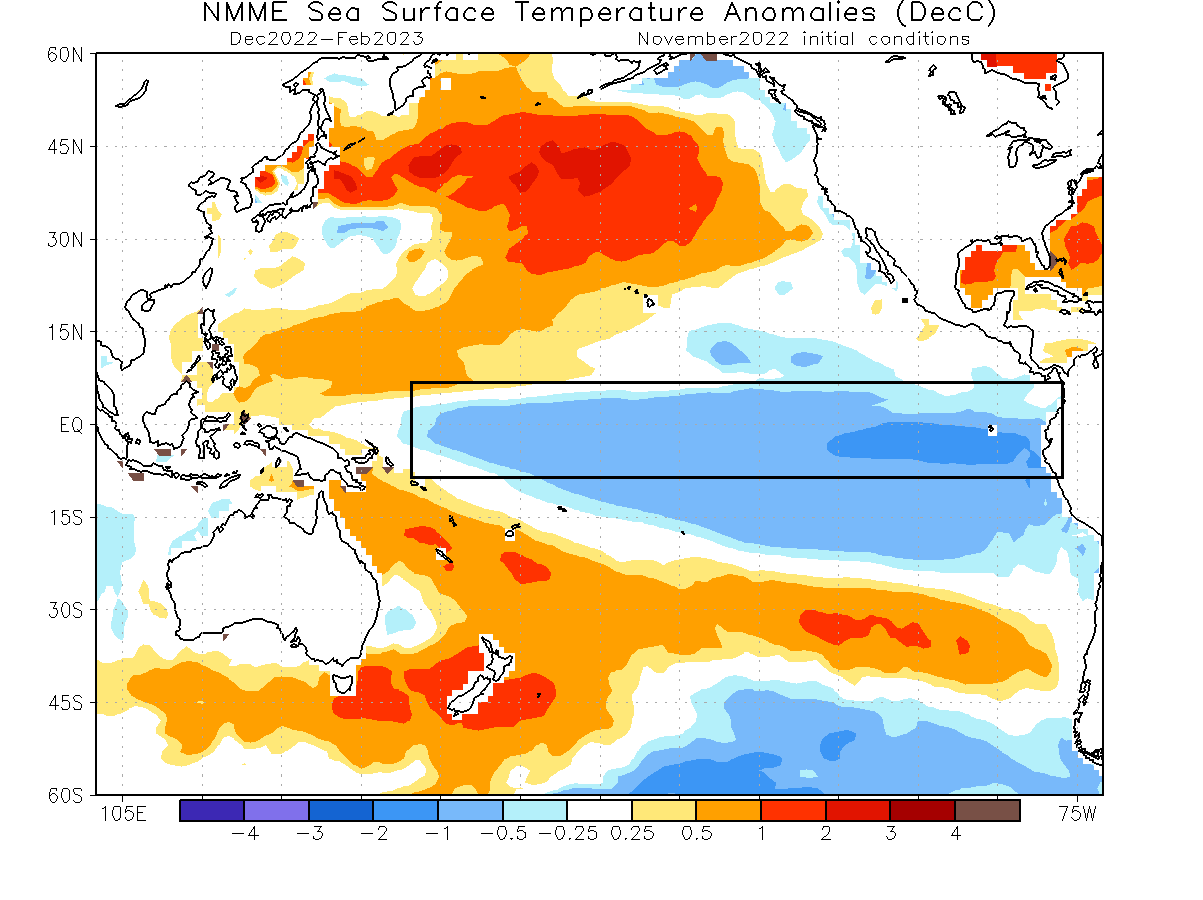
The analysis and ensemble forecast below from ECMWF shows the forecast for the eastern ENSO region. The La Nina conditions (below -0.5) will prevail over Winter. But a weakening of the La Nina is expected to start in between, with a significant shift towards a warm phase.
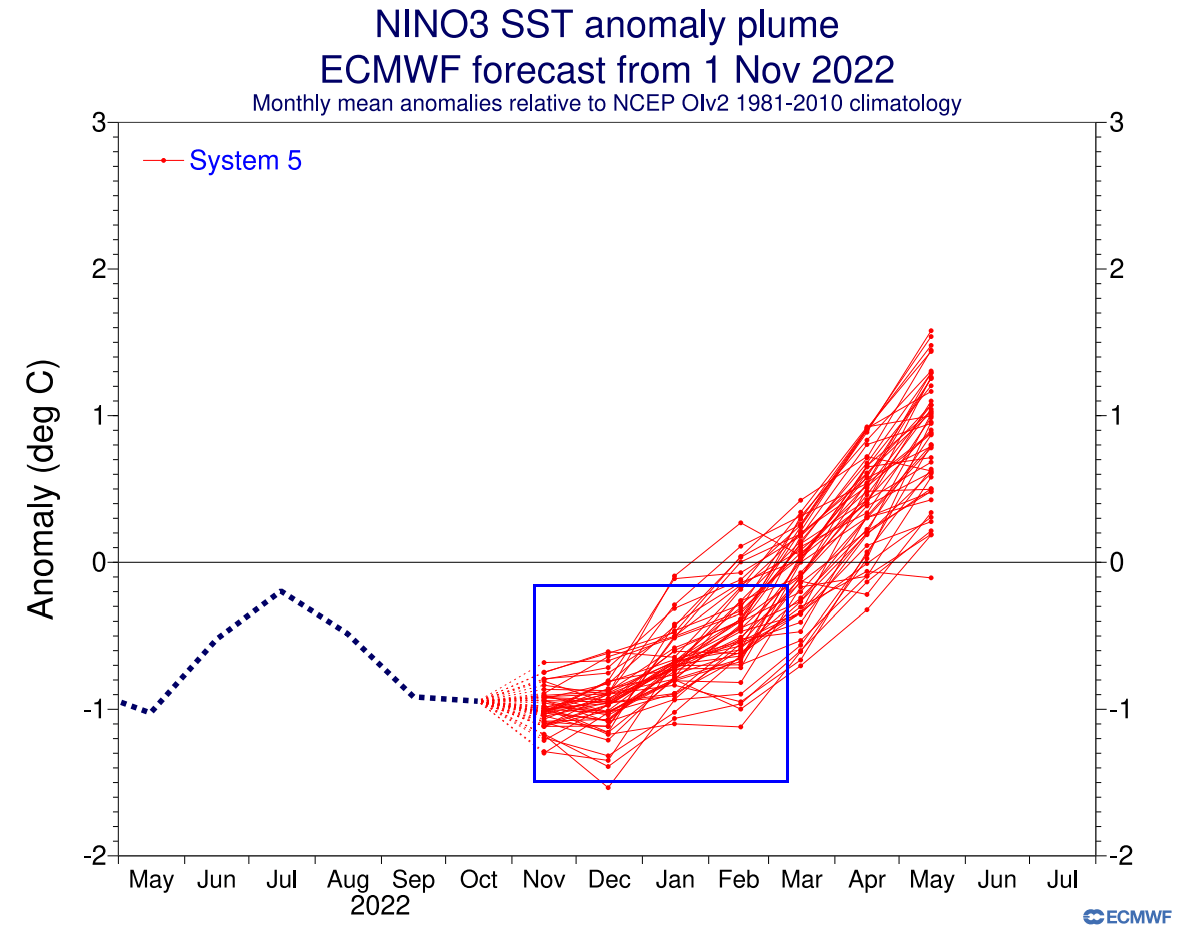
So what exactly does the latest forecast show for 2023?
EL NINO 2023 OCEAN FORECAST
Below we have an analysis/forecast graphic by ECMWF, which shows the long-range forecast of the main ENSO region. It shows the cold phase active over Winter. But a rather fast weakening of the cold phase will start this season, with an El Nino event likely later in the year.
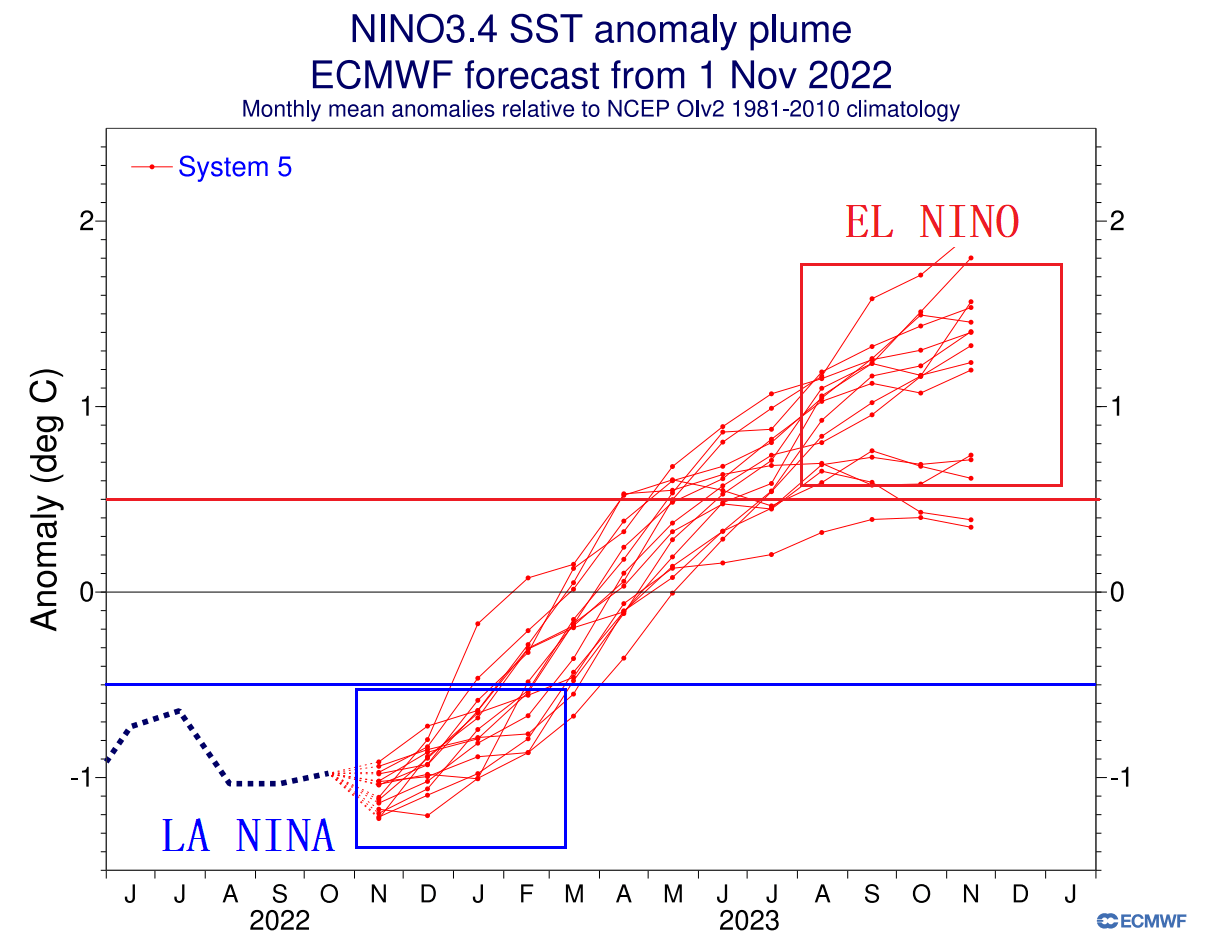
The ENSO forecast from the United States CFSv2 is similar. It shows the current cold anomalies to sustain over the Winter. But a breakdown of the cold phase will start soon, and this model also agrees on the likely emergence of a warm phase in 2023.
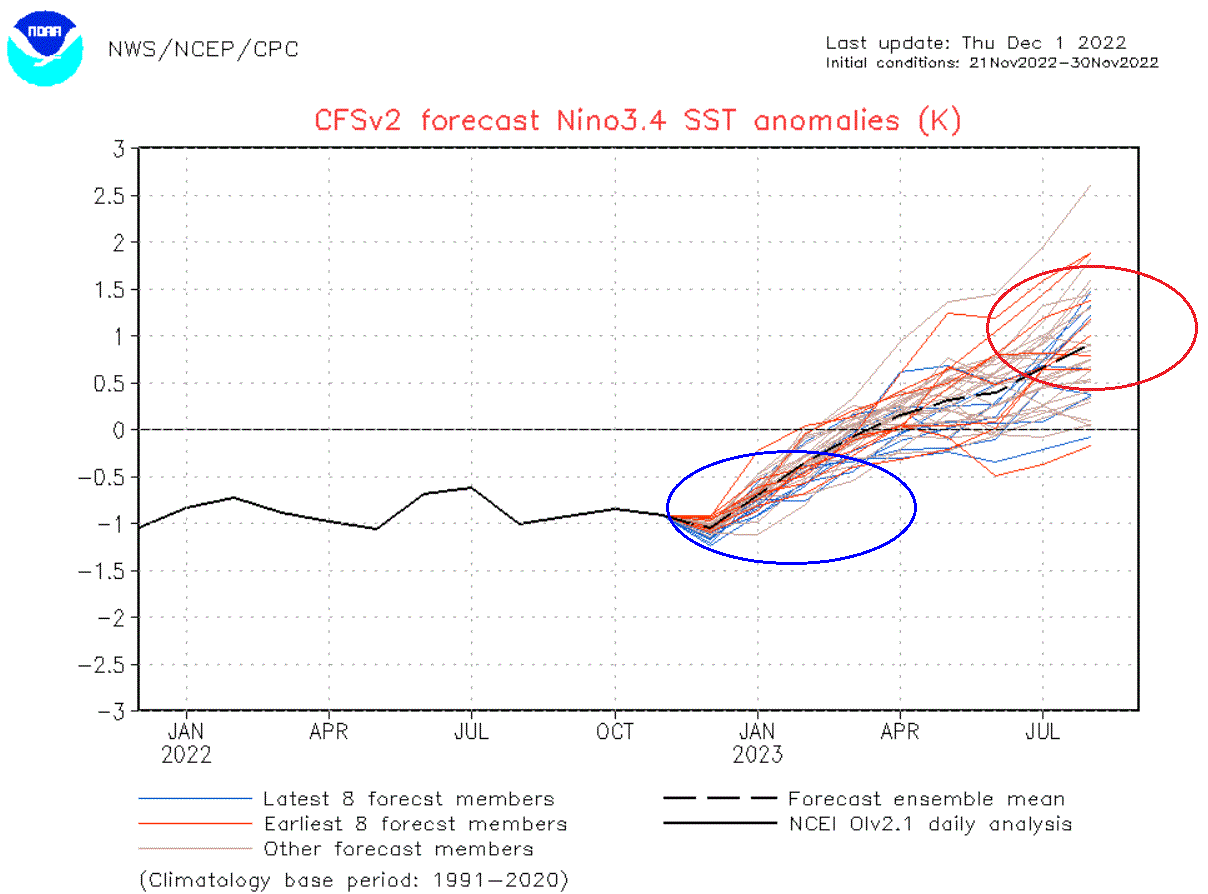
The IRI official probabilistic ENSO forecast also shows the current La Nina lasting over Winter 2022/23. But it is typical for a new phase to emerge in late summer/fall with seasonal pressure changes. And below, you can also see increasing chances for an El Nino event later in 2023.

Looking at the ocean anomaly forecast map, we can see the ECMWF forecasting a tongue of warm anomalies across the equatorial Pacific. These anomalies are expected to appear as soon as Spring, so the La Nina breakdown will be rather fast.

The North American multi-model ensemble forecast (NMME) also shows the same anomalies developing over Spring. As new ENSO phases usually start intensifying in late Summer, this is a healthy base for an El Nino to emerge towards Winter 2023/2024.

But how does an El Nino change the weather patterns, especially in Winter?
EL NINO WINTER WEATHER PATTERN
During the El Nino winter season, we have a strong and persistent low-pressure area in the North Pacific. That pushes the polar jet stream further to the north, bringing warmer-than-normal temperatures to the northern United States and western Canada.
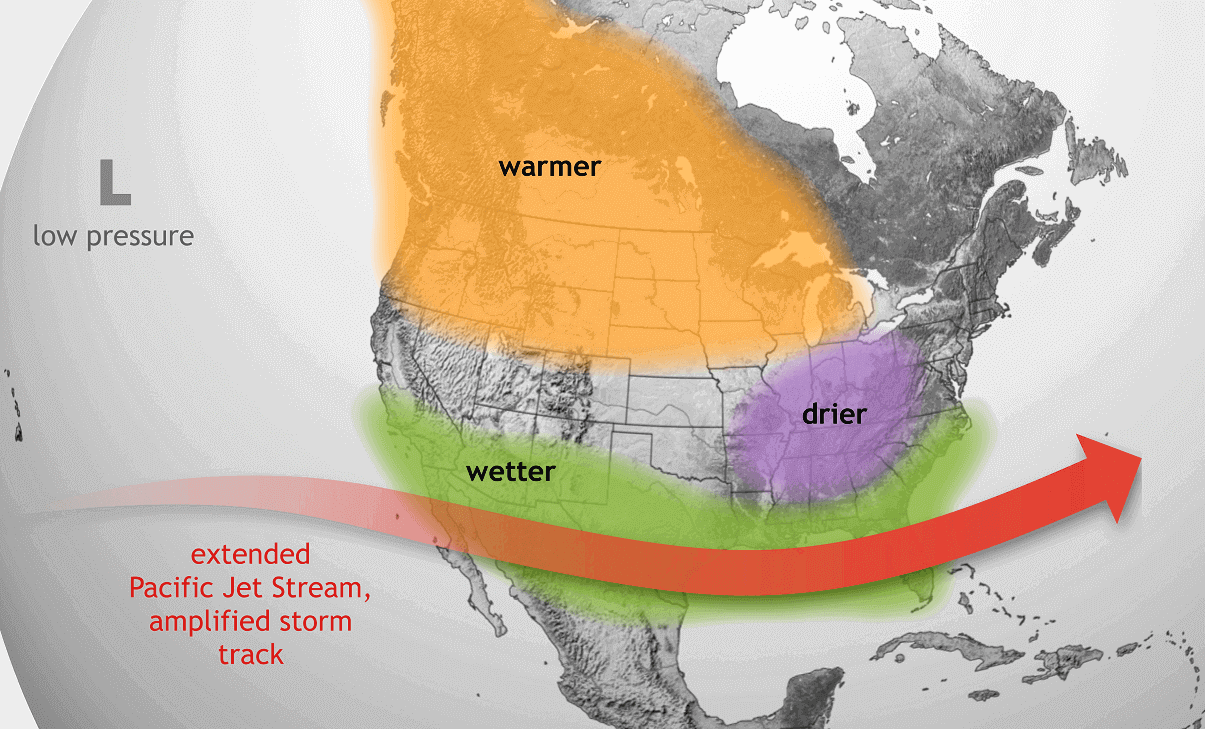
The southerly Pacific jet stream is amplified, bringing storms with lots of precipitation and cooler weather to the southern United States.
The image below shows the winter pressure pattern for the past few El Nino winters. You can see a strong low-pressure area in the North Pacific, a high-pressure zone over Canada, and a low-pressure storm track across the southern United States.
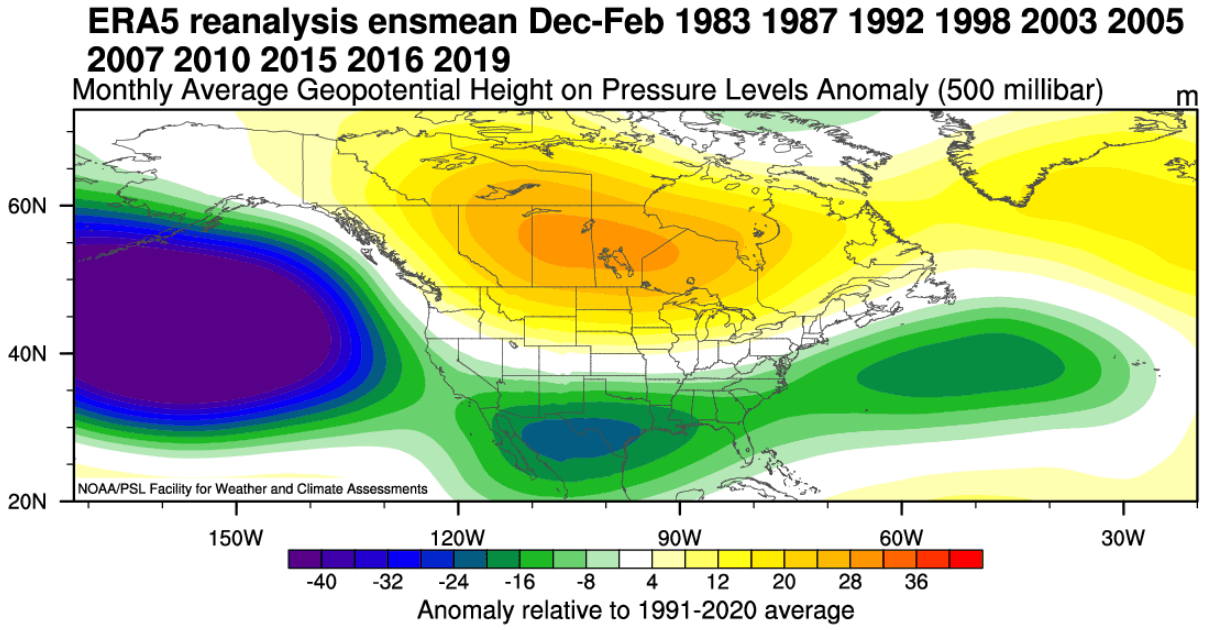
Below are temperature anomalies in these winters. You can see the average El Nino winter having colder temperatures in the southern half of the United States and parts of the eastern United States. The northern half of the country is warmer than usual, as is southern Canada.
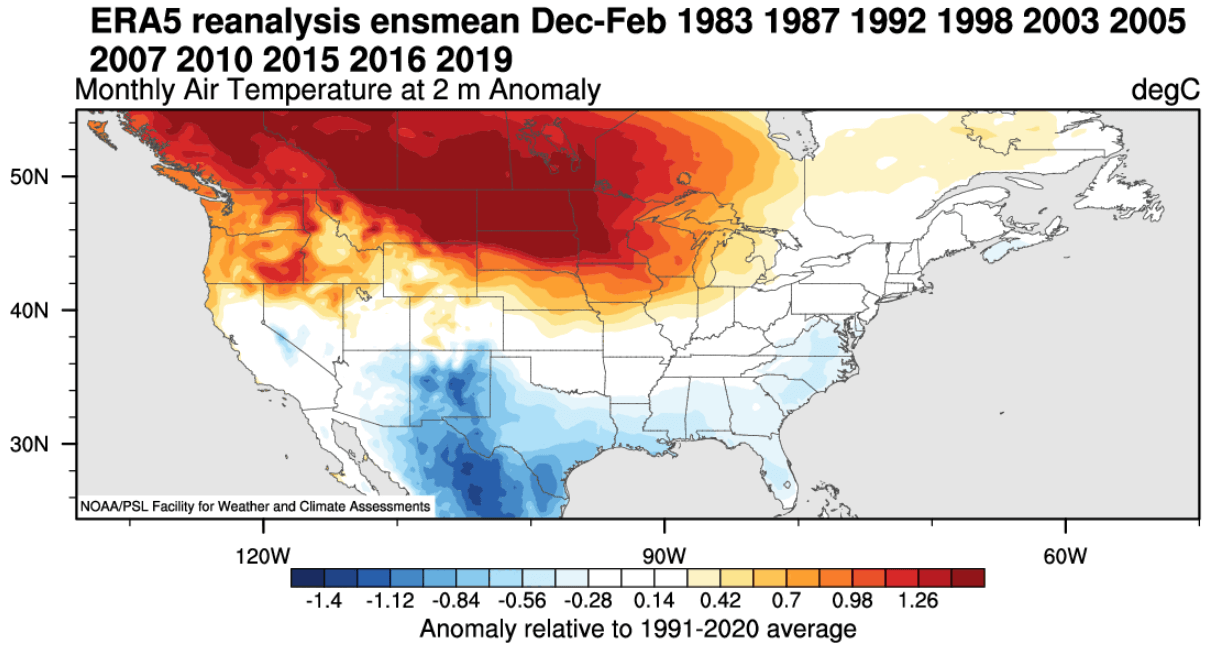
Precipitation-wise, an average El Nino winter brings more precipitation to the southern half of the United States, especially in the Southeast. However, drier winter conditions prevail in the northwestern United States and around the Great Lakes.
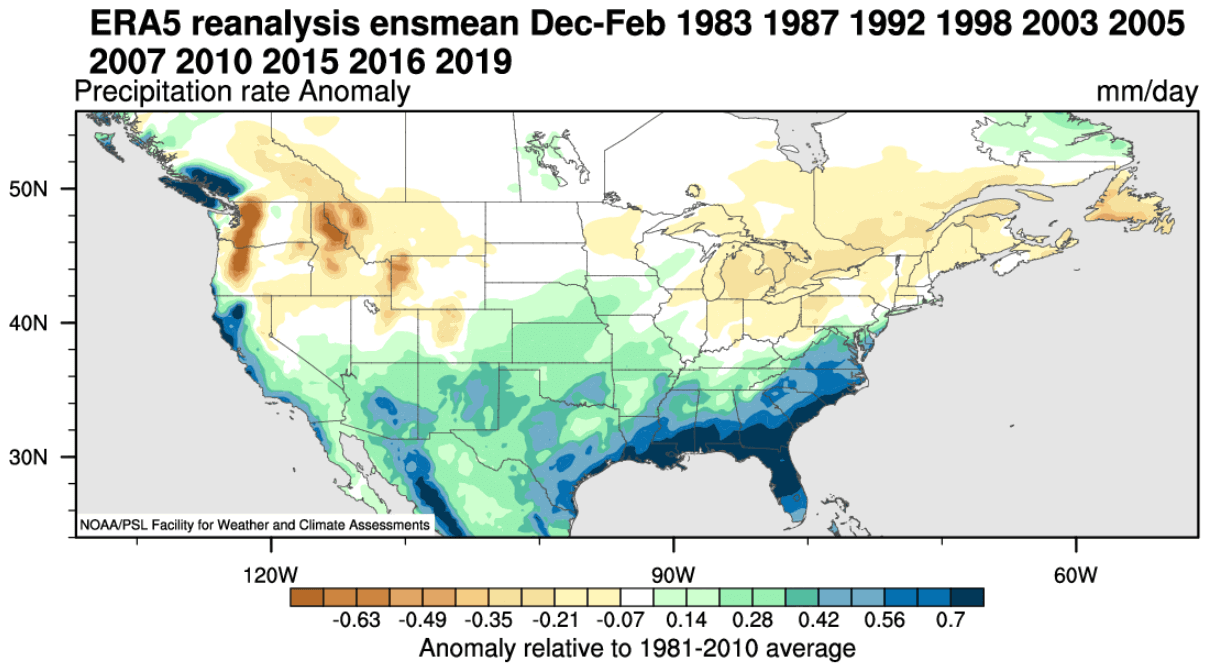
Of course, an El Nino also changes the snowfall patterns, as seen in the image below. There is less snowfall in the northern United States during the El Nino winter seasons.

That is mainly due to the conditions being mostly warmer than normal and drier in the north. But there is more snowfall in the west-central United States and in the eastern United States, with cooler weather and more moisture.
This is all due to the changes in the pressure anomalies and the shifting of the jet stream. After passing Canada and the United States, the jet stream moves into the North Atlantic, where it can take different paths toward Europe.
But the ENSO effects are much less direct in Europe than in North America. That is why we tend to focus more on North America to track direct (and more predictable) weather changes.
As El Nino changes the weather globally, hardly a corner of the world does not feel its effect. But the weather changes in other parts are less predictable as local weather systems play a specific role, as well as other global weather drivers.
COLD ENSO WINTER WEATHER 2022/2023
But if we focus on the season at hand, we are still dealing with a La Nina this Winter. So we will quickly look at how a La Nina changed the weather historically and what the forecast shows for this season.
A strong blocking high-pressure system in the North Pacific is the most typical effect of a cold ENSO phase (La Nina). That usually redirects the polar jet stream down over the northern United States. You can see the La Nina winter weather patterns in the image below by NOAA Climate.
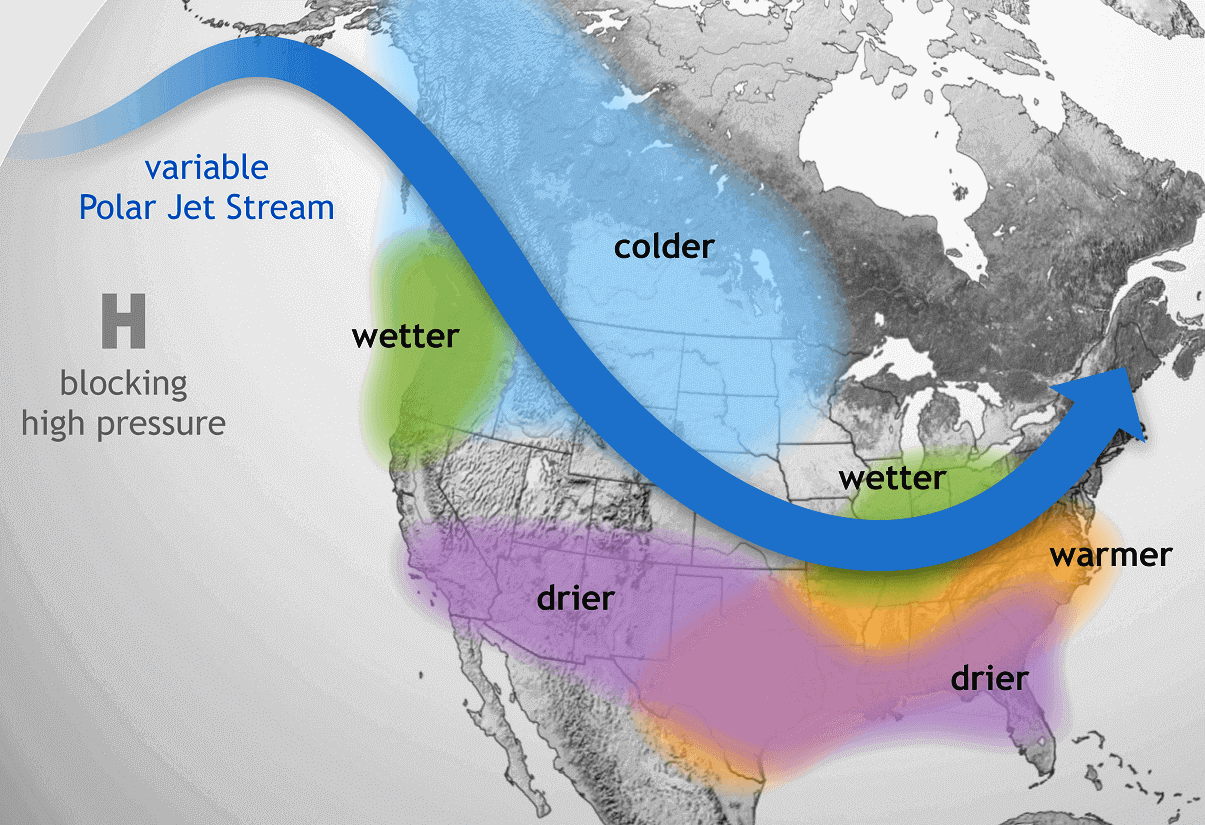
The image below shows the average pressure pattern during the La Nina winters in the past 40 years. We can see a strong high-pressure system in the North Pacific and a low-pressure area over Canada and the northern United States. Images by NOAA PSL.

A strong high-pressure system in the North Pacific aids in the development of a low-pressure region over Alaska and western Canada. That bends the jet stream downwards between the two pressure systems, as marked by the blue lines.
Looking at the temperature analysis for the same winters as above, we can see the cold anomaly area under the jet stream in western Canada and the northwestern United States. A cooler area extends over the Midwest and down into the south-central plains.

Warmer than normal weather and mild winter conditions are typically over the southwestern United States, eastern United States, and parts of eastern Canada. The main winter weather is usually in the Midwest and the central United States.
Precipitation-wise, La Nina winters are usually drier over the southwestern United States. Drier conditions are also found in the southeastern United States, as La Nina produces a weaker subtropical jet stream and less moisture for the east.

More precipitation is typical over the northwestern United States, the Great Lakes, and parts of the northeastern United States.
But what about snowfall? The historical data shows that the jet stream from a La Nina also changes the snowfall potential over North America as the pressure systems take a different path.
The colder air is more easily accessible to the northern United States, which increases the snowfall potential when moisture is available. The graphic below by NOAA-Climate shows the average snowfall pattern for La Nina Winters, as expected for this season.
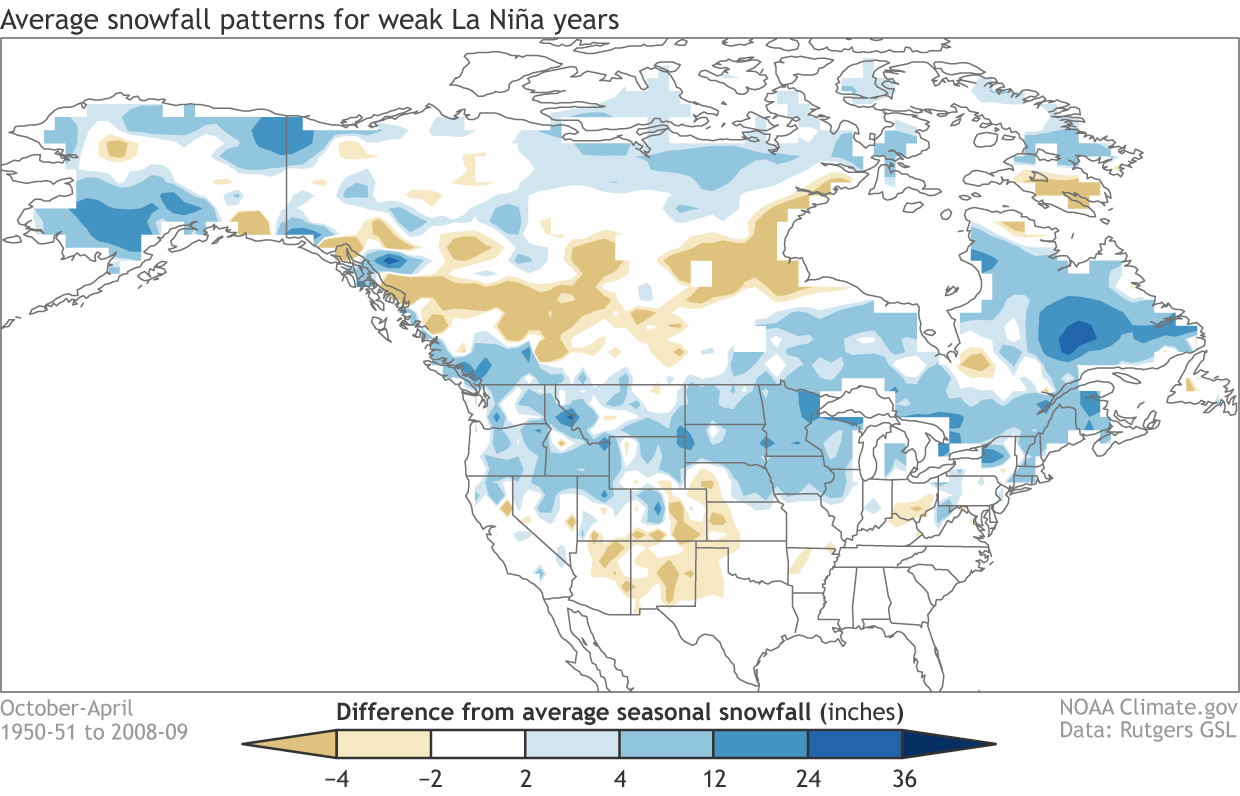
Besides the northwestern United States and the Midwest, we can see more snowfall potential over the northeastern United States and eastern Canada.
But what does the actual forecast data show for the upcoming Winter season? First, we will look at some simple forecast data for North America. That is where the ENSO Winter influence is strongest, compared to Europe, which does not experience a direct weather change from the La Nina.
WINTER 2022/2023 MODEL FORECAST
We have already looked at the ECMWF forecast above for the oceans. Next, we will combine its atmospheric forecast with the CFS model forecast from the NOAA/CPC.
Looking at the pressure anomaly forecast, you can see a strong high-pressure system in the North Pacific, typical for Winter with an active La Nina. A low-pressure system is over western Canada, shifting the jet stream into the northern United States.
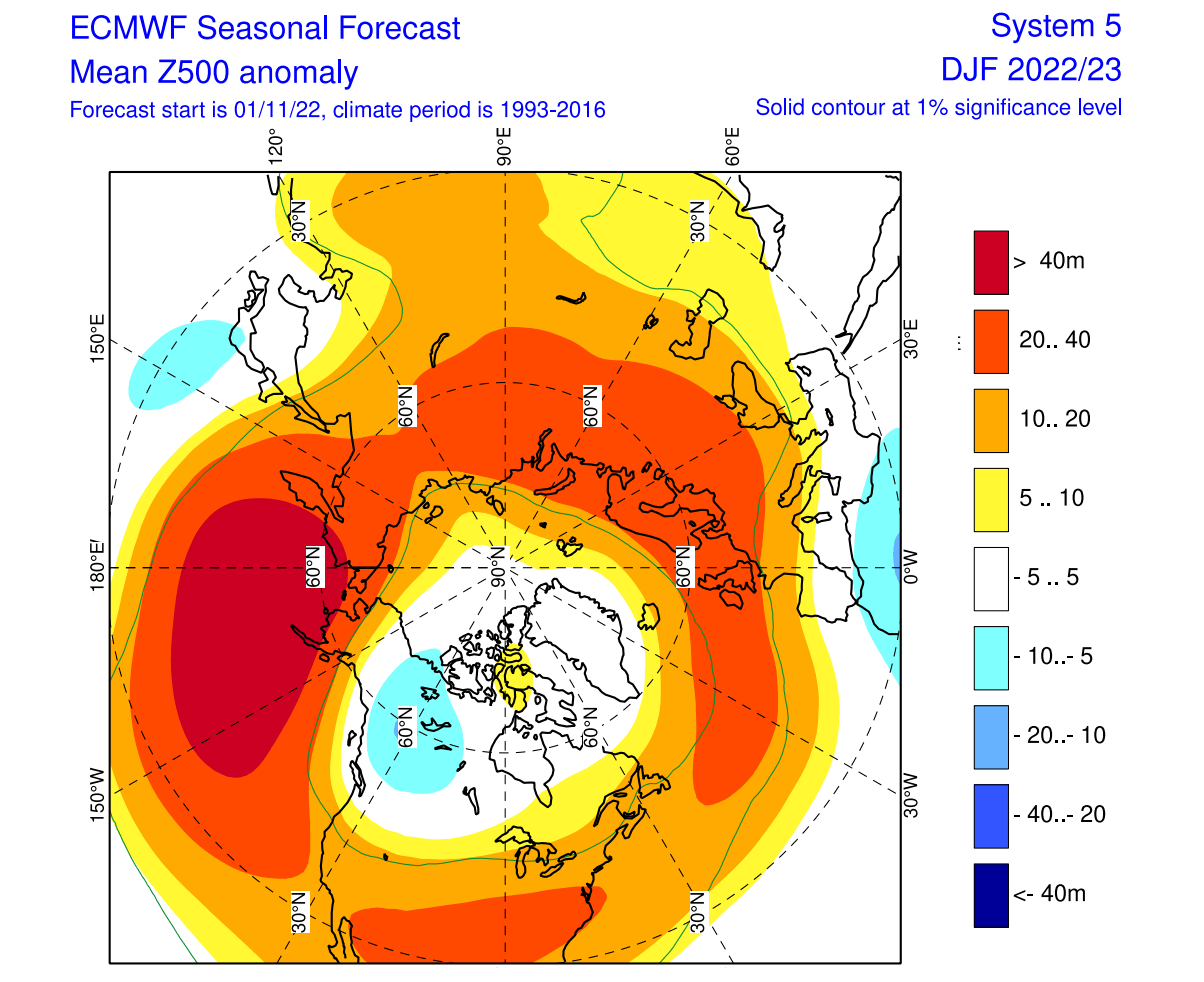
The temperature forecast for North America reflects this jet stream pattern. You can see much colder Winter temperatures over the northern United States, the Midwest, and most of Canada. Warmer temperatures are forecast south of the jet stream in most of the southwestern and southeastern United States.
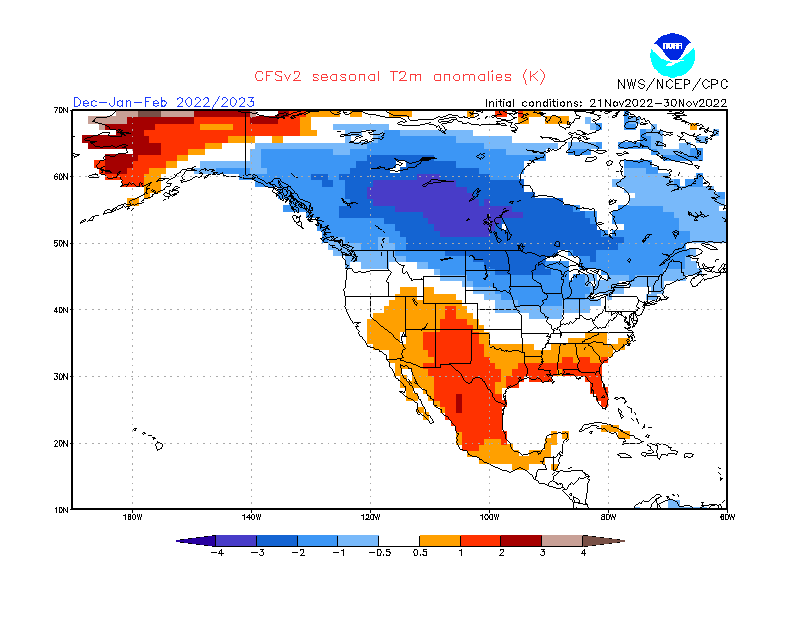
You can see a similar pattern in the precipitation forecast below, where more precipitation is forecast over the northern half of the United States. Drier Winter is expected over the southern United States.
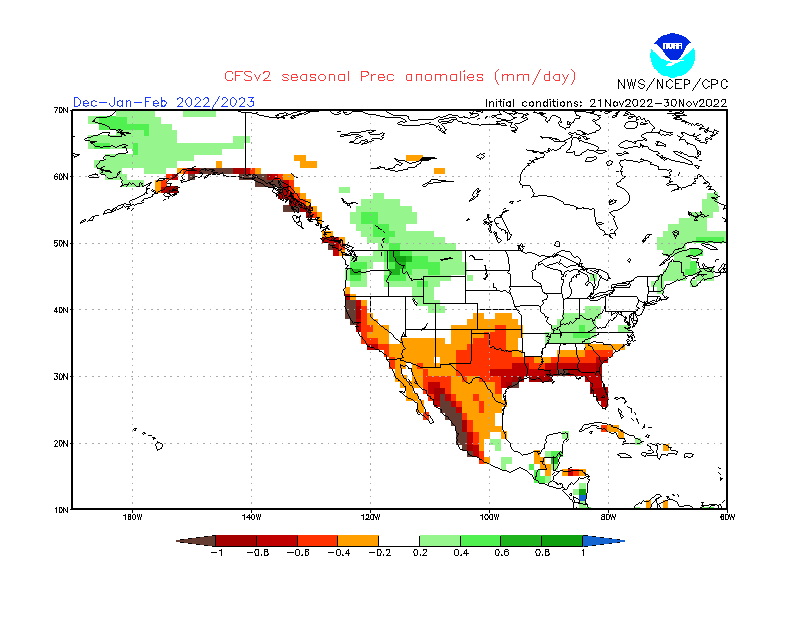
Overall this shows a very textbook La Nina winter to unfold, having a “double character” over the United States, from colder to the north to warmer over the south.
WINTER SNOWFALL FORECAST
Looking first at the ECMWF again, most of the United States has below-average snow accumulation. You can see more snow in the northwestern United States, upper Midwest, and southwestern Canada.

The rest of the United States shows less snowfall than normal, but that does not mean the Winter will be without snow. Just less than normal.
UKMO WINTER SNOWFALL FORECAST
The average seasonal forecast for the United States and Canada shows a typical La Nina snowfall pattern from the UKMO model. We see more snowfall over the northwestern and northern United States and southern Canada.
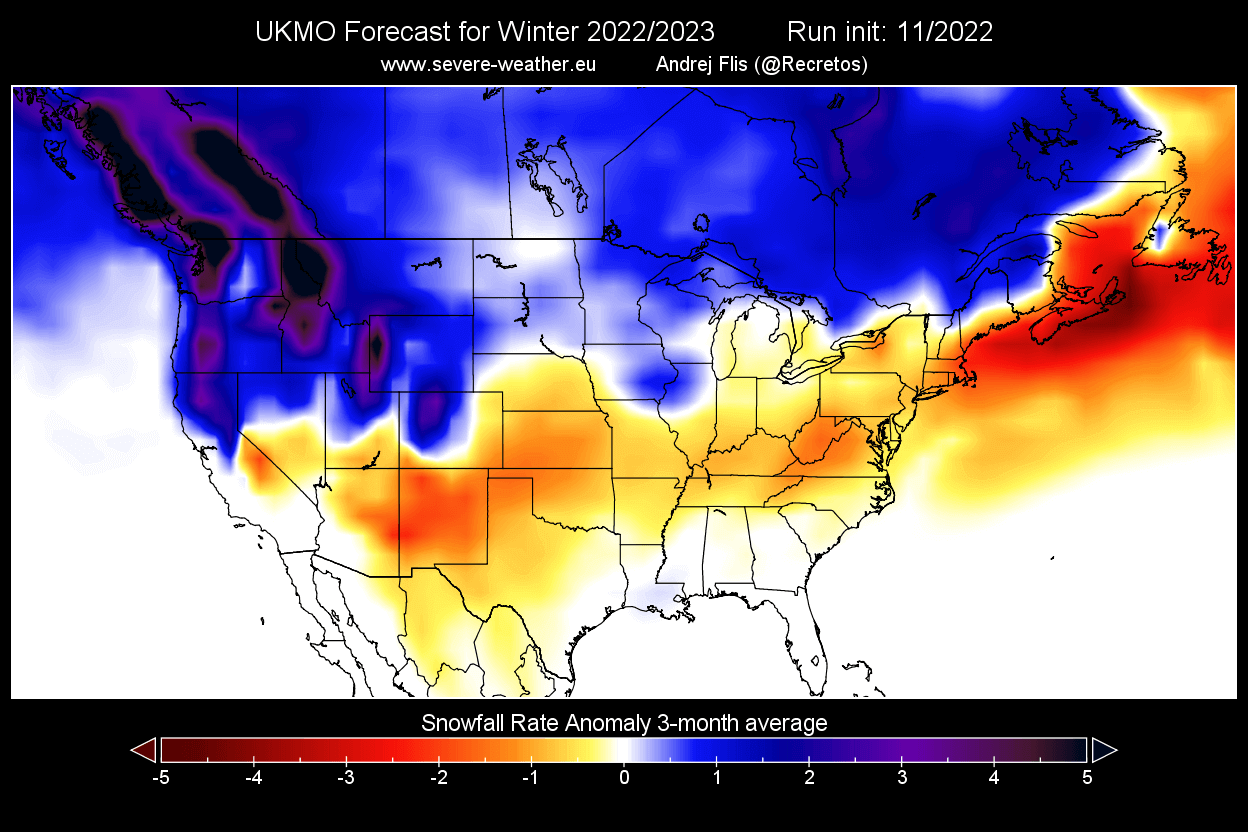
This is not too far from the ECMWF prediction, but we generally see more snowfall in the northern United States. This is also a more expected snowfall distribution, as it nicely reflects the historical La Nina snowfall patterns.
NOAA OFFICIAL WINTER 2022/2023 FORECAST
We can also track snowfall potential on normal temperature and precipitation Winter forecasts. The highest snowfall potential is usually in regions with colder temperatures and more precipitation.
This is can be seen in the NOAA’s latest official Winter 2022/2023 temperature forecast for the United States. It shows colder temperature probabilities for most of the northern parts of the United States. The southern half of the country has a higher probability of warmer than normal weather.
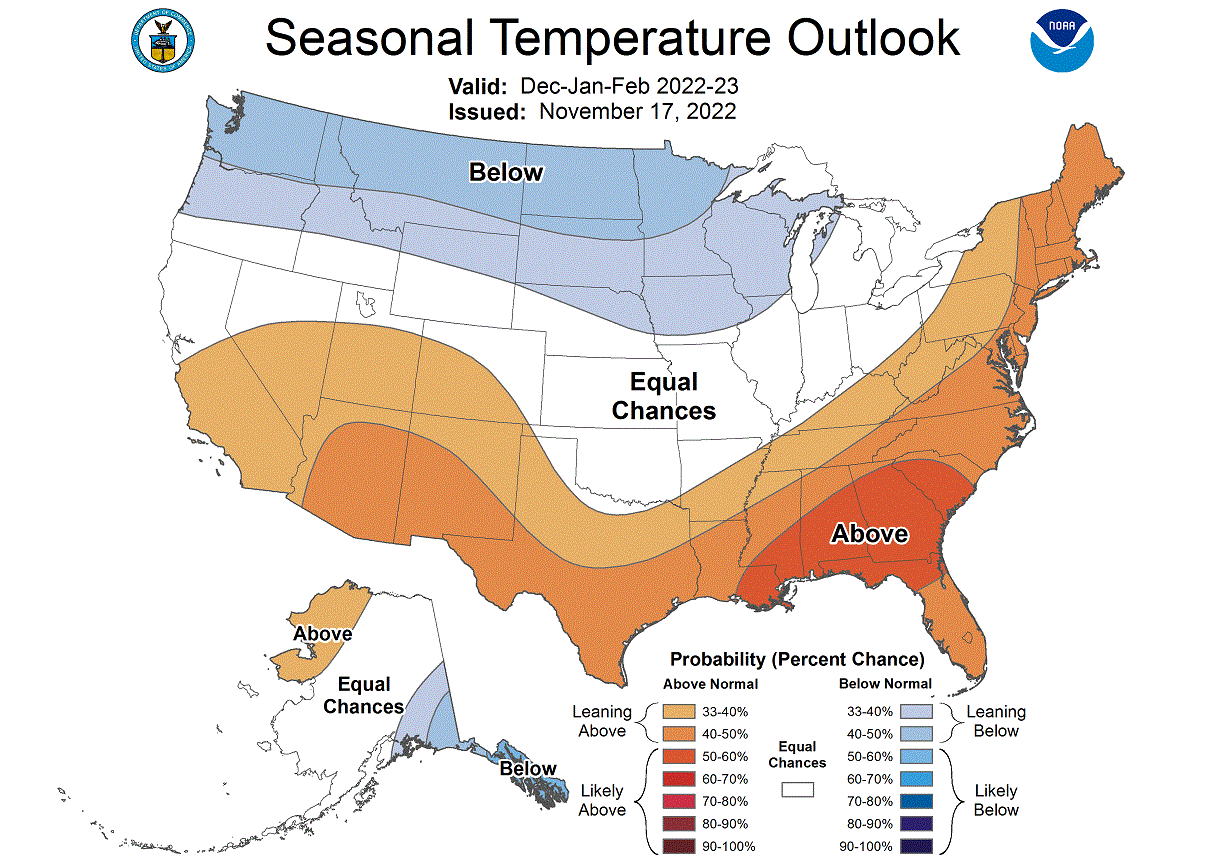
But take note of the trough of “equal” temperatures probability extending down low into the south-central states. That can be interpreted as a potential route of winter cold air outbreaks down from the Midwest to the south, creating snow events.
The official NOAA Temperature outlook points:
- Warmer-than-average temperatures are favored in the Southwestern and the Southeastern United States and along the Atlantic coast.
- Below-normal temperatures are favored from the Pacific Northwest eastward to the western Great Lakes.
The official precipitation forecast is also quite similar to the latest model forecasts. We see an equal-to-higher probability for more precipitation (and snowfall) over the northwest. It extends into the Great Lakes and the eastern United States. The southern United States is forecast to have a drier winter, looking more like a typical La Nina season.

NOAA Official precipitation outlook points:
- Wetter-than-average conditions are most likely in the Pacific Northwest, the northern Rockies, Great Lakes, and Ohio Valley.
- The greatest chances for drier-than-average conditions are forecast in portions of California, the Southwest, the southern Rockies, the southern Plains, the Gulf Coast, and much of the Southeast.
We will keep you updated on global weather development and long-range outlooks, so bookmark our page. Also, if you have seen this article in the Google App (Discover) feed, click the like (♥) button to see more of our forecasts and our latest articles on weather and nature in general.
WINTER 2022/2023 FULL SNOWFALL FORECAST:
See also: